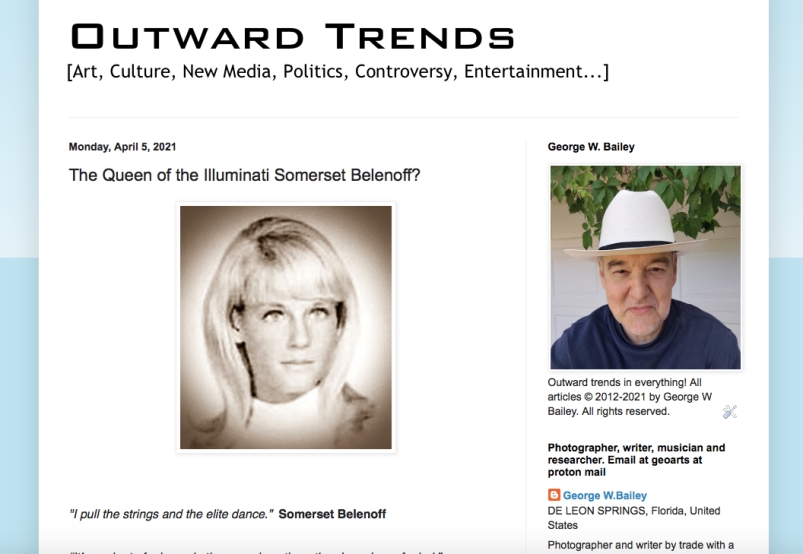It is books such as this one that demonstrate why people still investigate and research the Kennedy assassination after all of these years. Jefferson Morley has written one of the better books on the CIA and their involvement in the Kennedy assassination to date. Revolving around Winston (Win) Scott, starting his career in the OSS in the second world war to his becoming the CIA station chief of Mexico City during the mid 50’s to the late 60’s. Morley spins a fascinating tale of intrigue, espionage, CIA malfeasance, and silent Cold War battles. Also included—an account of Win Scott’s son Michael and his struggle with the CIA to retrieve his father’s memoirs. Morley had access to the unpublished manuscript, which sheds some light on CIA’s mission during this time, though it is heavily redacted. Of the 221 pages, only 90 are readable, the rest blacked out and classified. That includes the completely blacked out chapter on Lee Harvey Oswald. The author relies on declassified documents to fill in some of the gaps.
In the early 60’s, Mexico City as a hotbed of Cold War espionage operations. The CIA under Win Scott had set up an impressive surveillance undertaking of the Russian and Cuban embassies. This included extensive wire-tapping of most of the phone lines, and photo surveillance. This operation caught Oswald in its crosshairs, when he arrived in Mexico City in late September of 1963 seeking a transport visa to the Cuba to return to the Soviet Union.
As the story goes, Oswald entered the Cuban embassy requesting the visa, but they required a Soviet visa before proceeding. Oswald then arrived at the Soviet embassy but was told it would many months to complete. In order to salvage things, Oswald decided to return to the Cuban embassy and lie to them, declaring he had the visa. The Cuban embassy then called the Russians to double check and that is when they uncovered the lie. Oswald, being found out, apparently got very indignant and had to be escorted out of the building. He left, never to return, not even so much as filling out the visa apps at either embassy.
While all of this contains it’s own set of mysteries (mainly, what was the point of this?), the story gets stranger when Oswald allegedly calls the Soviet embassy a few days later. Judging from people who heard the original tapes, the surviving transcripts, and Hoover’s communication with Johnson, Oswald was apparently being impersonated. The caller identifying himself as Oswald spoke very poor Russian. Oswald in fact spoke Russian so well, that his wife thought he was a native, speaking with a regional accent. And even more telling, the Oswald on the phone apparently didn’t know what had just transpired. It’s the equivalent to getting a loan application, never filling it out and submitting it, and then calling the bank later and asking how things are preceding. Morely does firmly establish this fact, which is largely denied by historians and pro Warren Commission defenders.
Just because Oswald is being impersonated does not mean there was some grand conspiracy behind the assassination of John Kennedy. It just means there is a lot more going on here than meets the eye. Somebody knew about Oswald and his business to mimic him. Who was that? For what purpose? This fact opens us up to more areas to investigate and of course, more mysteries. Morley does reveal an astonishing new fact—the CIA used impostors to gather intelligence. One American met with what he thought was a Cuban embassy official, who it turned out, was a CIA operative. Information gathered from the meeting was used to get an indictment against the man upon his return home. Mimicry thus becomes a useful too in intelligence operations.
It’s hardly news that the CIA lies. Deception is the name of the game for them. It’s just so easily documented, as Morley does, that they lied to the Warren Commission and maintain the lie to this day, that they didn’t know what Oswald was up to until after the assassination. That of course is impossible due to Win Scott’s effective surveillance program and is a slight to him and his work. In actuality, they had been in their own words been “keenly interested” in Oswald, as they had a red flag for any American that showed up at a communist country’s embassy. So interested, they kept additional information on Oswald from Scott. Perhaps an operation going that they didn’t want their own station chief to know about? Once again, we have no evidence of a grand cabal conspiring to murder a President. Just an intelligence agency with a maddening obsession with secrecy that never ends—even now—with all of the participants long gone from the scene.
The book ends with what could have been. Winston Scott dies of a heart attack at the age of 62. By now the higher ups at the CIA knew Win was working on his book and Richard Helms, soon to be CIA director, had an advance draft. It was too explosive and Win wasn’t following the party line of “we didn’t know till after the assassination.” Upon his death, and with the good graces of his widow, Helms sent his colleague, James Angleton chief counter intelligence to Mexico City to get the manuscript and other items in Win’s safe. Those included surveillance tapes of Oswald, photos of Oswald entering the embassies, and several boxes of other documents. Except for the memoir, the tapes and photos would be destroyed in the years to come, just as Michael Scott would be filing his FOIA requests for them.
Overall, an excellent insight into the machinations of the CIA and their cover-up and later destruction of material evidence in the Kennedy assassination.
Tuesday, June 17, 2008
Book Review: Our Man in Mexico by Jefferson Morley
Labels:
assassination,
CIA,
commission,
conspiracy,
Dallas,
death,
Jeff Morley,
jfk,
Kennedy,
lho,
Mexico City,
Oswald,
Warren,
Win Scott





